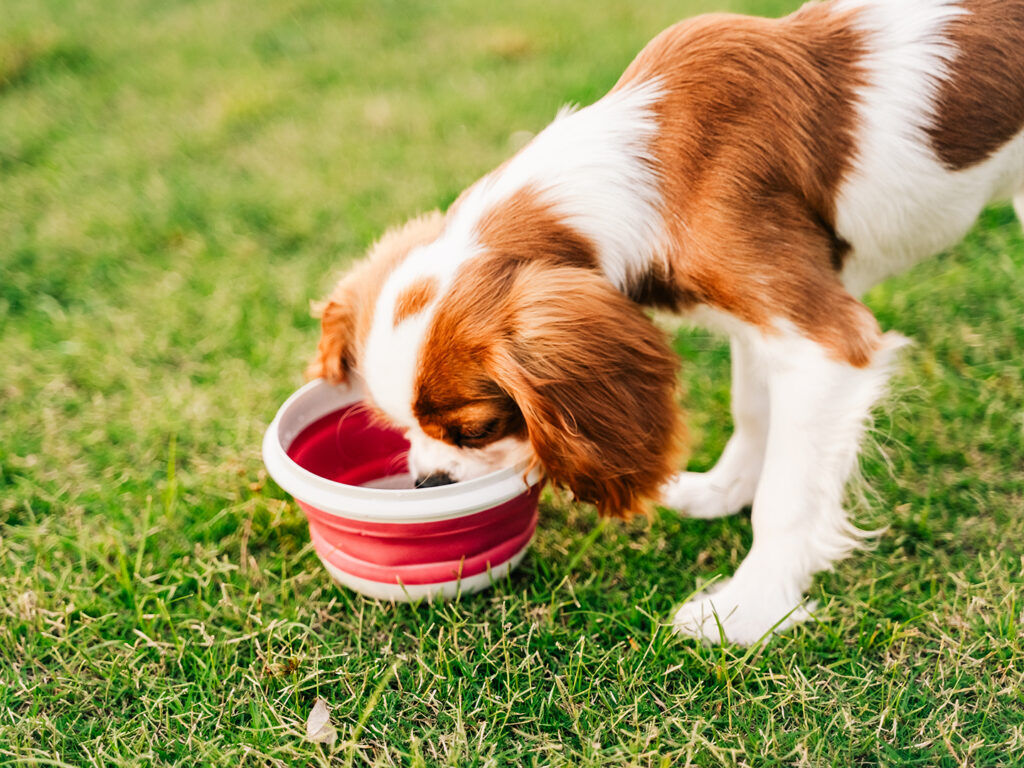Pet Talk: Sharing is not always caring with communal water bowls
Published 12:00 pm Wednesday, August 14, 2024

- It may be tempting to allow your dog a few laps from the nearest drinking station in order to cool off. However, shared hydration sources can potentially have dire effects for your beloved furry friend.
When taking your dog for a walk during the scorching summer heat, it may be tempting to allow your dog a few laps from the nearest drinking station in order to cool off. However, shared hydration sources can potentially have dire effects for your beloved furry friend.
Dr. Lori Teller, a clinical professor at the Texas A&M School of Veterinary Medicine & Biomedical Sciences, helps take the guesswork out of safety and potential risk factors associated with public water bowls.
Trending
Lurking Below The Surface
Teller recommends owners consider the quality of the public water source before letting a pet take a sip, as a well-meaning gesture by a local business owner or neighbor may ultimately be hiding contaminants under the surface.
“This is of particular concern if the bowl is not cleaned regularly or if the water is left standing for extended periods of time,” Teller said. “Stagnant water can retain environmental contaminants, such as plant material, parasites, toxins, mold and more. Dogs that have stepped in fecal matter and then played in the bowl could leave parasites and bacteria in the water.”
Teller said diseases that can be transmitted from public water bowls include:
— Kennel cough: a respiratory infection that leads to a gag-like cough, lack of appetite, and labored breathing.
— Canine papilloma: a virus spread through saliva that causes warts in and around the mouth.
Trending
— Salmonella: an infection that causes bloody diarrhea, fever and vomiting.
— Giardia: a parasite leading to weight loss, diarrhea and vomiting.
— E. coli: a bacteria that causes dehydration, diarrhea, and lack of appetite.
— Leptospirosis: a bacterial disease commonly spread by rodent urination that can lead to kidney and liver disease, or even death, in dogs.
Best Judgment
Hydration awareness can help take away the risk of water contamination, especially if an owner considers their furry friend’s water needs before leaving the house.
“Ideally, owners would carry a collapsible, portable bowl and some fresh water with them to give to their dog,” Teller said. “Alternatively, they could stop at a restaurant or convenience store and request a cup of water for their dog.”
While a potential risk will always be present in publicly available water bowls, Teller believes there are certain situations when these risks are worth taking.
“If your dog is hot and thirsty and at risk of dehydration, then that may take precedence over avoiding the water in the bowl,” Teller said.
Two For One
In addition to considering the safety concerns associated with publicly shared water bowls, Teller recommends owners also consider the risks of multiple pets sharing one food bowl in the same home. Sharing is caring in most cases, but, according to Teller, an owner may not be caring by making dinnertime a lesson in sharing.
“Often, dogs may need different portions of food, and in many cases, one dog may need a diet change due to a medical condition; that can be much more challenging to manage if the dogs share a bowl,” Teller said. “Or, one dog may prevent another from eating out of the bowl.”
On the other hand, having the same water bowl in a household of multiple pets does not bring about the same problems as food bowl sharing.
“In most cases, dogs living in the same house will be exposed to similar infectious agents, so sharing a water bowl will not have a tremendous impact on that,” Teller said. “It is still important that water bowls (and food bowls) be washed with soap and hot water on a regular basis.”
Deciding if a public water bowl is safe for your panting pup is a case-by-case decision for an owner. Teller insists that if it looks like pond water, a dog should not drink from it. When in doubt it is always better to be cautious with the possibility of contaminated water, as owners should not gamble with the health of their cherished pet.






